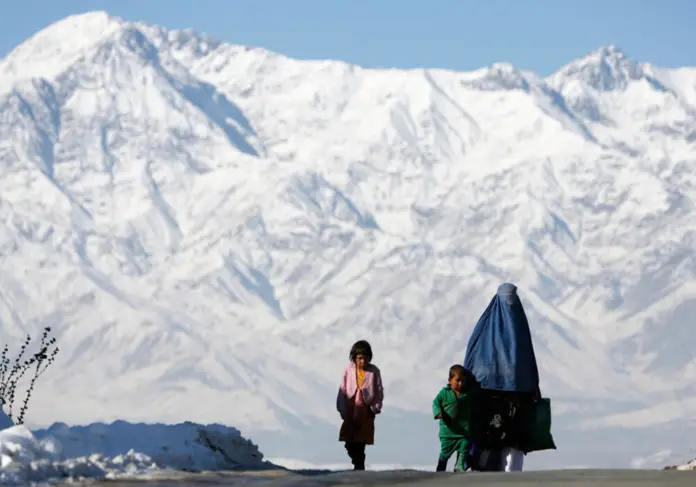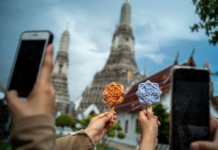In Afghanistan, 95% of the population, do not have enough food to eat. More than half the population is at risk of starvation, making around 23 million people, including 3 million children under five.
Poverty, hunger and harsh winters are nothing new in Afghanistan. Multiple elements are making the food crisis much worse. First, there is a terrible drought. And second, there’s the state of the economy. Afghanistan faces three significant concerns that could either build the country or shatter it into even more instability: economy, security and climate change.
When the Taliban took over, the US froze more than $9 billion of Afghan assets; the money and investments held in the US. At the same time, foreign financial aid was sufficiently reduced.
This matter of genuine concern stands firm. Seventy five percent of the country’s budget was made up of foreign aid under the old government; the wealth is not there anymore.
The US and western allies do not want the Taliban to get their hands on any seized money or assets. One of the big problems is a significant shortage of cash in the country that runs on money. The banks and the state institutions are deprived of money and set limits on withdrawals.
Due to the crippling economy, everything is getting more expensive, especially imports like fuel, because of the currency, which has dropped to an all-time low against the dollar.
From civil servants to construction workers, people just are not getting paid. On the other hand, not a single country has officially recognised the Taliban government, but the Afghan people are irked by the ongoing isolation. The United Nations and other international aid agencies are still working in Afghanistan to deliver food and supplies. That is, by far, the primary way of helping the Afghan people right now. It needs to be able to trade like any other country. If not, the government may face a major disaster of internally displaced people. A major crisis would be met by its neighbouring countries, including Pakistan and Iran. This is one sole reason Pakistan has continuously urged the international community to unfreeze Afghan assets to curb the crises.
So, who are the leaders, and where are they? Muhammad Hasan Akhund is the acting prime minister and is on a UN sanctions list. Sirajuddin Haqqani, who has been designated a terrorist by the US, is the interior minister. Muhammad Yaqoob, the son of the Taliban’s founder, is the defence minister. The Taliban’s supreme leader, Hibatullah Akhundzada, leads the movement. But he’s rarely seen in public.
So who’s really in charge, and what are their plans? It’s just not very clear. There is also an ongoing confusion about the new social codes, which so many people were worried about when the Taliban came to power.
The leadership has categorically stated that peoples’ rights will be protected following Islamic law, at least according to the Taiban’s version.
The problem is they haven’t specified what they mean by that, meanwhile, what’s happening on the ground is a mixed picture.
In Herat, the Taliban killed four alleged kidnappers and hung their bodies up in public. What about the situation for women? Well, there have been changes. Women’s Affairs Ministry has been changed and instead renamed as the Ministry for Propagation of Virtue and Prevention of Vice. Female aid workers were barred from performing their duties in more than 25 provinces. The majority of women are going back to university, but segregation is a must. There are even fewer answers for teenage girls. In most regions, they haven’t been allowed to return to school.
The Taliban say that’s temporary, but there is floating scepticism.
Security has also been a significant concern for the Taliban government amid the ongoing attacks by the Islamic State. The Taliban said they could handle it. For now, they have not quite been able to deliver on that because an affiliate of IS, a group known as IS Khorasan Province, has stepped up attacks since the Taliban took over.
A suicide bombing took place at Kabul’s international airport that killed more than 180 people. Another attack at a military hospital killed 25. ISKP has claimed responsibility for at least two attacks on Shia mosques where dozens were killed. Not to forget that it wasn’t very long ago that the Taliban were the ones carrying out attacks.
Climate change is one of the essential elements that needs to be taken care of for ultimate stability. Afghanistan is the sixth most vulnerable country to climate change officially. Droughts, famine, and almost no scientific research in agriculture could undoubtedly lead to a catastrophic end.
So, one of the significant challenges for the new government is how to navigate this kind of role reversal. The Taliban, though, say they are still in their early days of reign. The thing is, right now, Afghans don’t have time. There are still so many questions about Afghanistan’s future. The Taliban leaders need to answer questions, but many more questions are due that the US and the international community need to answer.







